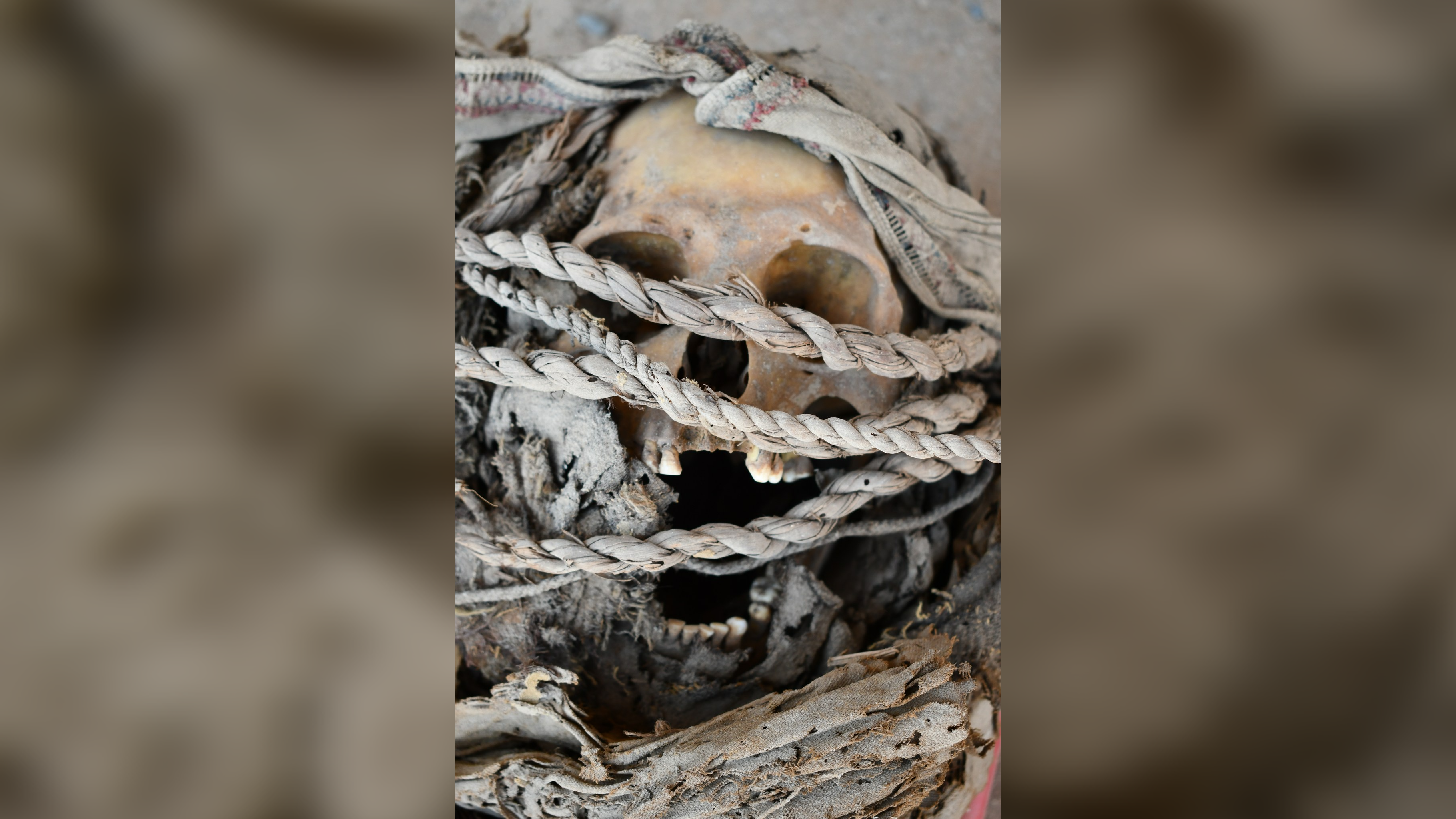Condors won't stop visiting (and trashing) this California woman's house. Here's why.
More than a dozen of the sizable birds made themselves at home and destroyed nearly everything in sight.
Over the weekend ~15 California condors descended on my moms house and absolutely trashed her deck. They still haven’t left. It sucks but also this is unheard of, there’s only 160 of these birds flying free in the state and a flock of them decided to start a war with my mom 😭 pic.twitter.com/bZyHsN58BkMay 5, 2021
A semirural house in Southern California recently hosted some unruly visitors: more than a dozen condors. They were terrible houseguests; they shredded a screen door and spa cover; destroyed potted plants, lawn ornaments and furniture; and relieved themselves all over the deck.
Fifteen to 20 of the California condors (Gymnogyps californianusi) showed up on the weekend of May 1 at the house in Tehachapi, California, according to the Associated Press (AP). Many of the birds gathered on the deck, and still more congregated on the roof, The New York Times reported. Several wore numbered wing tags, which are used by the U.S. Fish and Wildlife Service's (FWS) California Condor Recovery Program to identify and track the birds, according to the program's website.
Homeowner Cinda Mickols photographed the uninvited avian companions, and her daughter Seana Lyn Quintero, a graphic designer in San Francisco, shared the images on Twitter on May 4. In the photos, several condors perch on the deck railing and survey the wreckage of their rampage that lies scattered across the deck, which was "absolutely trashed," Quintero wrote in the tweet.
Related: Species success stories: 10 animals back from the brink
Mickols considered the experience "pretty amazing but also the worst," Quintero tweeted. "They keep hanging out on her roof and railings, messing with stuff and pooping everywhere."
Even when just a few condors are visible in Mickols' photos, the deck looks crowded. That's because California condors are sizable birds. With a black-feathered body that's nearly 5 feet (1.3 meters) long and a wingspan of about 9 feet (3 m), condors are the biggest birds in North America, according to The Cornell Lab of Ornithology. Condors' heads are bald, pinkish and ringed by a luxurious feather ruff, and adults have patches of white feathers under their wings and on their legs, The Cornell Lab says.
These big birds are also highly endangered. Only about 230 live in the wild in California, Arizona and Baja California, Mexico, and an additional 160 condors live in captivity, according to The Cornell Lab. But why did nearly two dozen wild condors decide to take up temporary residence outside Mickols' home?
Sign up for the Live Science daily newsletter now
Get the world’s most fascinating discoveries delivered straight to your inbox.
She does think this is pretty amazing but also the worst. They don’t have to leave her property but leave the house alone. They keep hanging out on her roof and railings messing with stuff and pooping everywhere. Trees are fine but not the house please 🙏 pic.twitter.com/QhE9XVERZFMay 5, 2021
"The California condor is a social species, and it is not unusual to see large congregations of them within their habitat — like where this incident occurred," said Arianna Punzalan, a supervisory wildlife biologist with the California Condor Recovery Program. Because condors are scavengers (and, unlike vultures, don't have a strong sense of smell), this social behavior helps them find decaying animal remains scattered across the landscape, Punzalan told Live Science in an email.
Over the past 25 years, condor populations have been slowly rebuilding from historic lows in the 1980s, when there were just 22 birds in the wild. With greater numbers of condors in their historical range, where humans are also abundant, the stage is set for more interactions between condors and people, Punzalan explained.
"The home where the condors have congregated is in historical condor habitat where natural food sources occur," she said in the email. "Unfortunately, they sometimes perceive houses and decks as suitable perch locations. Condors are curious animals and explore their surroundings using their beaks, which are powerful and can cause property damage."
Mickols spoke to a representative with the FWS on May 7 about the persistent condor visitors, Quintero tweeted. As one possible explanation for the condor visit, the FWS suggested that the birds may have been drawn to the spot by the presence of strong updrafts — something condors are known to ride — above Mickols' home.
"So the condors likely realized 'Hey this place is great! We can stay here at night and then surf the wind to find food during the day and know we can always catch a wave home,'" Quintero said on Twitter.
Also yesterday evening my mom found what we assume is a pellet from a condor (I suspect #52 since he really likes her roof). Like owls, condors will barf up any undigested bits of their food like bones and teeth pic.twitter.com/Gg8NntA4IqMay 7, 2021
For predicaments such as Mickols', "hazing" the condors is typically advised, to keep them from getting too comfortable and to limit their destructive behavior, Punzalan said.
"Safe hazing methods include clapping, yelling, spraying water from hoses or using other preventative methods, such as scarecrow sprinklers," she said. "Sometimes it takes persistence, but hazing keeps condors safe from any potential dangers and helps prevent property damage." People should not try to feed or touch the birds, which could encourage them to become habituated to humans and lead to more frequent visits.
After more than a week, the condors still showed no signs of abandoning their new hangout — though they did shift their attention to another part of Mickols' property, Quintero tweeted on May 10.
"Condor party was back and they were also in her driveway out front," Quintero wrote. "No longer content with just waging war on mom's deck, the condors have now decided her fence must be dismantled," she added.
Originally published on Live Science.

Mindy Weisberger is an editor at Scholastic and a former Live Science channel editor and senior writer. She has reported on general science, covering climate change, paleontology, biology and space. Mindy studied film at Columbia University; prior to Live Science she produced, wrote and directed media for the American Museum of Natural History in New York City. Her videos about dinosaurs, astrophysics, biodiversity and evolution appear in museums and science centers worldwide, earning awards such as the CINE Golden Eagle and the Communicator Award of Excellence. Her writing has also appeared in Scientific American, The Washington Post and How It Works Magazine. Her book "Rise of the Zombie Bugs: The Surprising Science of Parasitic Mind Control" will be published in spring 2025 by Johns Hopkins University Press.









